Choosing a printer may sound easy. But once you start diving into all the available features, making a choice can quickly get daunting. Do you need a basic printer just to print, or do you want to scan and copy as well? And what about faxing, or scanning to and printing from the cloud, or even scanning and sending an email? How do you choose between inkjet and laser technology? What’s the real difference between a $200 model and a $500 model?
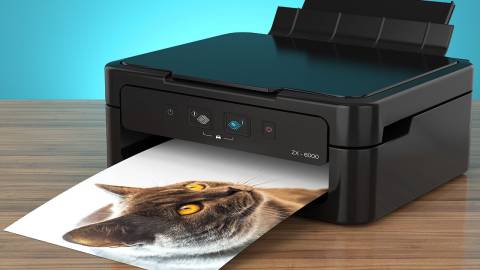
Don't fret: We've got you covered on all fronts. PC Labs tests dozens of printers every year, across everyday consumer models, big business machines, pocket-size photo printers, and more. Scroll down for our top tested picks across all these categories, then read on for a comprehensive guide to how to buy a printer.
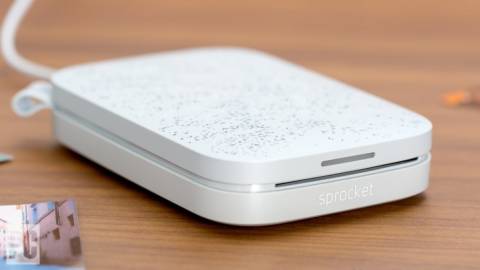
Printers vary widely based on whether they’re for home use or business use (or dual use in a home and home office), what you intend to print with them, and whether you need color printing or just monochrome. In particular, text, graphics, and photos each require different capabilities to print at high quality. Even if you print just one kind of output most of the time, you also may want a printer that can do other things well. So be clear on the full scope of your printing needs before you buy.
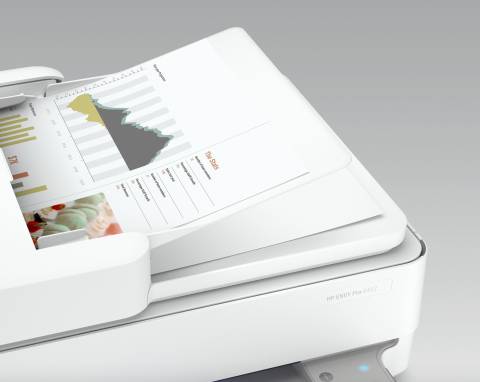
Most printers are designed with either business (usually office) or home use in mind. Generally, business models are geared toward outputting text if they are mono printers, and both text and graphics if they are color models. Home printers (typically inkjets) favor photos and often graphics, as well.
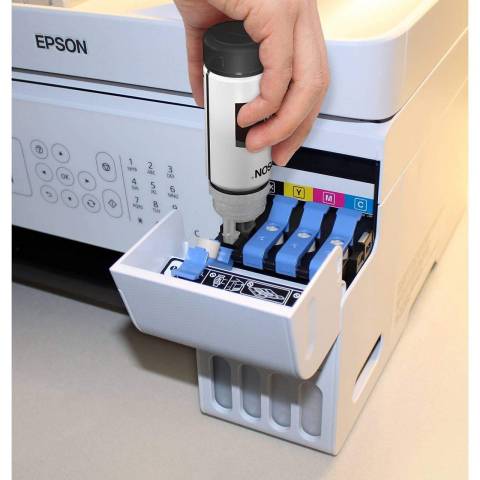
Special-purpose options include label printers, portable printers, and dedicated and near-dedicated photo printers. (Even among specialty printers, 3D printers are a special case, and beyond the scope of this discussion.)
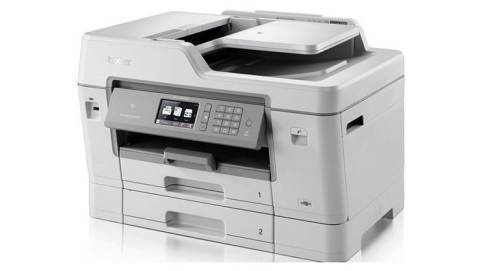
Should I Get an All-in-One Printer, or a Single-Function Model?
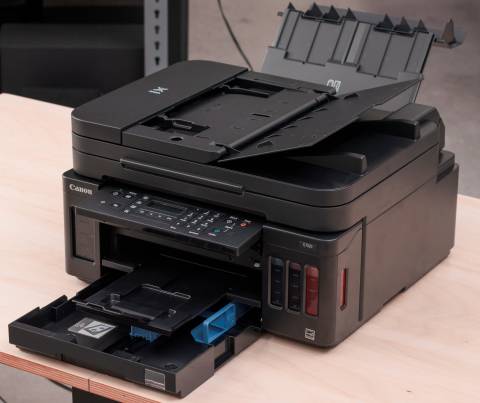
Most printers today add extra functions beyond printing. The additions always include scanning, which can be convenient and economical if you have light- to moderate-duty scanning needs. If you don't need scanning or related features like copying and faxing at all, however, or your scanning needs are heavy-duty, you might be better off with a single-function printer and a separate scanner.
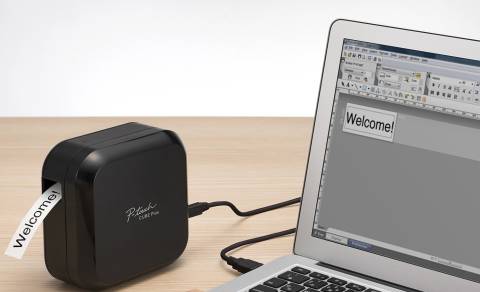
Most lasers, and some inkjets, with extra functions include multifunction printer or MFP in the name, while most inkjets, and some lasers, use all-in-one or AIO. The two terms, and their acronyms, are interchangeable. Along with scanning, the additional functions almost always include some combination of standalone copying, standalone faxing, faxing from your PC, standalone emailing, emailing through your PC, and standalone copying to and printing from online systems.
Office MFPs typically include an automatic document feeder (ADF) to handle multipage documents and legal-size pages. Many ADFs can handle two-sided documents—either by scanning one side and flipping the page over to scan the other side, or by employing two sensors to scan both sides of the page in a single pass. Some single-sided ADFs let you scan one side of a stack of pages, flip the stack manually to scan the other side, and then automatically interfile the pages in the right order.
Some inkjet AIOs offer additional printing options, including printing on optical discs. Many let you print documents and images from, and scan to, mobile devices. Some models let you email documents to the printer from anywhere in the world, then print them out. Our roundup of the best all-in-one printers will help you sift through the many options out there.
What Are the Most Common Types of Printer?
Generally, business models use laser or similar technology (more on that shortly) and are geared toward text, or text and graphics, while home printers are generally inkjets and favor photos and graphics. Within each printer category, quality for each kind of output varies widely. Some business printers can handle all three types well enough for in-house printing of brochures and other marketing materials, for example.
The two most common technologies, laser and inkjet, increasingly overlap in capabilities, but there are still differences. Most lasers and LED printers (which are identical to lasers other than using LEDs for a light source) print higher-quality text than most inkjets, and almost any inkjet prints higher-quality photos than most lasers. However, some inkjets today print text that's nearly laser quality, except for a tendency to smudge if they get wet, while some lasers print photos at what's known as business quality, which translates to good enough for a trifold brochure.
Beyond questions of technology and output type, there are several more finely grained categories of printer.
Home printers (approximate price range: $50 to $250) are almost exclusively inkjets (with the exception of some small-format dedicated photo printers). They are built for low-volume printing, tend to be slow, and also tend to have high ink costs. They typically print photos better than text, and may or may not print graphics well. Almost all of them are all-in-ones. If your budget is tight, and you want a single printer for text, graphics, and photos that handles photos reasonably well, this is where to start looking for an inexpensive printer.
Home-office printers ($100 to $400) are largely inkjets or inexpensive mono lasers, and are built for low- to mid-volume printing. Most inkjets in this category are all-in-one printers, geared primarily toward text and graphics printing, though some also handle photos well, while most lasers are printers only. Paper capacity starts at about 100 sheets, though higher-end models can hold up to 500 sheets. Most of these printers are also suitable for micro offices (with up to five people), and many are perfectly fine choices for households, especially for students printing a lot of documents for school.
Home-office printers are a subset of business printers ($100 to $2,500 or more), which range from compact models for low-volume use to gigantic floor-standing units that can anchor a department. Most business printers are lasers (though inkjets have been making inroads into that market for years), and many are monochrome, intended primarily for text rather than graphics and photos. Most are multifunction devices. For many businesses, speed and paper capacity are paramount, and security is important as well, which is why many business printers offer security features such as password-protected printing. Some even employ accessories such as an encrypted hard drive or an ID card reader to limit access to documents.
Regardless of which home or business category a printer is in, cost can be a key factor. In general, the more expensive the printer, the lower its per-page printing costs, while the lower the ink price, the more expensive the printer will be. Whether you'll save more with a low-cost printer or low-cost ink depends on how much you print (more on this later). Some printer makers also offer ink subscription programs that can lower running costs, particularly if you print close to the number of pages included in the plan.
Near-dedicated photo printers ($400 to $2,000) are designed for professional photographers and photo enthusiasts, but almost all of these photo printers are just as useful for graphic artists, since they also print high-quality graphics. Some are wide-format printers designed to print on paper as large as supertabloid size (13 by 19 inches), and many can print on paper rolls as well. For precision color, they use up to a dozen ink cartridges. With these, ink cost per page is much higher than for office printers, due to the amount of ink they use. Total cost per page is higher still, because their inks are designed to print on a range of expensive, high-quality papers, each of which can give the image a somewhat different look.
Small-format photo printers ($80 to $250) are dedicated devices built strictly to... you guessed it, print photos, especially from smartphones. Print sizes can range from wallet-size to 5 by 7 inches, and many models can print only a single size. Most are highly portable, and either come with a battery or accommodate one that you can buy separately.
Tabloid- and supertabloid-size, printers ($150 desktop printers to multi-thousand-dollar floor-standing beasts) are another subset of business printers. These wide-format machines come in all the same potential variations as other office printers, from mono-only or color-capable, to printer-only or MFP, to inkjet or laser. The difference is they can handle printing on up to tabloid (11-by-17-inch) or supertabloid (13-by-19-inch) size paper. Note that the least expensive in this group are limited to accepting only one large sheet at a time, making them useful for printing at this size in small quantities only, and only occasionally.
Label printers are built to churn out paper or plastic labels. Some include label-design software and connect to your computer, while others are standalone devices, letting you design and print labels using a small, built-in keyboard. Manufacturers of either kind of label printer typically offer a variety of label colors, types, and sizes.
Portable business printers aren't common, but they can be useful for applications like printing a proposal for a potential customer while sitting in their office or at their kitchen table, or printing the latest version of a handout for a potential client while sitting in your car, just before a meeting. Typical models in the portable printer category are compact and light, and use inkjet or thermal technologies to print. And most come with a rechargeable battery.
How Much Do You Plan to Print?
If you print only a few pages a day, you don't have to worry about how much a printer is designed to print, as defined by its recommended (not maximum) monthly duty cycle. To define those terms? Maximum duty cycle is the absolute most a printer should be allowed to print per month without affecting the maximum number of pages it can print in its lifetime. The recommended duty cycle is usually how much it can handle on a regular basis and still last as many years as it was designed for. It may also be based on the paper capacity and how frequently you can conveniently refill the trays.
If you print enough for the duty cycle to matter, don't buy a printer that doesn't include that information in its specifications. Figure out how much you print by how often you buy paper and in what amounts. If you usually print on both sides of the paper, count each sheet as two pages in your calculations. Then pick a printer designed to print at least that much.
What Paper Types and Sizes Do You Print On?
Be sure to consider the minimum and maximum paper size you print on, paper thickness, and whether you need a duplexer to print on both sides of the page. If you often print on more than one type of paper—switching to envelopes, checks, or letterhead for example—look for a printer with multiple drawers, or at least a single-sheet bypass tray, so you don't need to constantly unload regular paper and load your specialty media then reload the regular paper. You'll also want a paper capacity that won't require adding paper more often than feels comfortable. A good rule of thumb is that you shouldn't have to refill paper more than once a week, on average.
How Much Will a Printer's Total Cost of Ownership Be?
The high cost of printer ink is a traditional sore spot for both home and business customers, which has led to the major manufacturers introducing ways that users can lower their per-page ink costs. But the companies are also preserving their own revenues, which means you need to think in terms of the total cost of ownership —the initial cost plus the total cost of ink over the printer's lifetime—to know which printer will be less expensive in the long run.
Depending on how many pages you print, paying a high cost per page for a low-cost printer can actually be the less expensive choice. (Our primer How to Save Money on Your Next Printer shows how to calculate the total cost of ownership for inkjets. The same logic works for any printer.)
If you print enough to make a high-cost printer with low-cost ink the more economical choice, note that Epson’s EcoTank and SuperTank printers, Canon's MegaTank printers, and HP's Smart Tank Plus printers use inexpensive bottled ink that you pour into internal tanks, while Brother’s INKvestment models ship with high-capacity ink cartridges—in some cases, several sets of them—that offload ink into reservoirs within the printer. HP's Neverstop laser printers offer a similar approach, just with bulk laser toner. With any of these models, you'll pay extra up front for the printer, but the included ink will last a long time, and additional bottles or cartridges are notable for their low price. (See more about how to save on printer ink.)
Ink subscription programs are another way to lower ink costs. HP Instant Ink is the big one here, along with Brother Refresh EZ Print and Canon Pixma Print Plan. All offer owners of select printers the option to pay a monthly fee for printing up to a certain number of pages. The same fee applies for either black or color printing, and each company automatically sends you more ink when you run low. These programs can save you a considerable amount of money, particularly if you print mostly in color and print close to the number of pages included in the plan.
How Fast Do You Need to Print?
If you print only one or two pages at a time, you don't need a speed demon. In fact, most home printers are not built for speed, and most lasers with high page per minute (ppm) claims leave out the first page when calculating the rating, giving the much slower first-page-out (FPO) time separately. If you print a lot of longer documents, however, the fast speed starting with page 2 is more important, which means you probably want a laser printer.
As a rule, laser printers will be close to their claimed speeds for text documents, which don't need much processing time. Inkjets often claim faster speeds than more expensive lasers, but they usually don't live up to these claims. However, inkjet printers have been getting faster, and a few recent high-end models (sometimes dubbed laser alternative inkjets) can hold their own against comparably priced lasers for speed. (See how we test printers.)
How Are You Going to Connect Your Printer?
USB ports remain ubiquitous on printers. Most office printers, and an increasing number of home printers, also include an Ethernet jack, Wi-Fi wireless connectivity support, or both, which let you to share the printer with your home or office network. (If you're having trouble with this feature on your current printer, here's how to troubleshoot your printer's Wi-Fi connection.) Printers that offer Wi-Fi Direct (a peer-to-peer protocol that sometimes masquerades under a different name) can connect directly to most Wi-Fi-enabled devices.
Most major printer companies now provide mobile apps so you can snap a photo with your phone and print it out directly, without needing to transfer it to a computer first. Small-format photo printers often support Bluetooth for connecting mobile devices and more. A few printers can connect to a mobile device for printing via Near-Field Communication (NFC) merely by tapping the phone or tablet to a particular spot on the printer, but the NFC fad seems to be fading.
Do You Need Printer Security Features?
Printer security is often overlooked, but at your peril. Hackers can gain access to a network through the printer, and in any office printer that you're not right next to, sensitive documents in the paper tray can be seen by prying eyes before you get to them. Many business-centric models include a private printing feature, so that after you send the print job to the printer, you have to enter a PIN at the printer's control panel to actually print it.
For business printers in particular, firmware should be kept updated, as it often repairs vulnerabilities, and any printer hard drives should be encrypted. Many manufacturers offer administrative tools to help IT departments ensure printer security.
How Do You Gauge Size and Weight?
To a large extent, a printer's size and weight are dependent on the paper handling features you need, but even so, there are considerable variations. Make sure the printer will fit in its allotted space (in all three dimensions, including paper feeders and output trays that may need to extend), and isn't too heavy to move around if you decide to renovate. Very compact printers are available for people who live and work in dorm rooms or other tight spaces.
Printers: Frequently Asked Questions
Should you buy third-party ink or refill kits?
For inkjet tank printers and bulk toner laser printers, ink or toner from the printer manufacturer doesn't cost enough to be an issue. For cartridge-based printers, third-party ink often costs significantly less. But be aware that it can also come with a whole tank full of issues.
First, there’s no guarantee that you’re going to get the same quality ink from a third party that you would when buying the manufacturer-branded product. Also, using ink that isn’t approved by the manufacturer can violate your warranty. And don’t think you can get away with secretly using that renegade ink: If your printer has an internet connection, it may well report your violation to the manufacturer. Sometimes, with firmware updates, we've seen the use of third-party ink deauthorize the use of the aftermarket cartridge.
Many printer manufacturers now offer ink subscriptions, so new ink shows up at your door when you need it. If that's available for your model, it can often be the best way to go.
Should you buy cheap paper? What about recycled paper?
For everyday printing, store-brand 20-pound weight paper will usually serve nicely. However, you'll often get better looking output if you step up to a higher-quality paper. For lasers, as well as for inkjet text and graphic printing, that means a heavier weight, and possibly a brighter white level. For photos on inkjets, it means getting matte presentation paper or photo paper. Getting photo or matte paper that's the same brand as your printer will usually be the best choice; printer manufacturers design ink and paper to work together and often offer a variety of presentation and photo papers.
Recycled paper also offers acceptable quality, and you can find 100% post-consumer-content recycled paper for many uses, including cover stock and bright white paper suitable for business use. There are other kinds of eco-friendly paper as well, such as all-purpose paper made from sugar cane and photo paper made from cotton. Do your small part to save a tree and research eco-friendly media options. Any modern printer will handle them well.
What is the best printer for home use?
What kind of printer you get for your home depends on what you plan on printing. As a general rule, if you print text only, or text and graphics that don't need color, a mono laser printer will do the trick. If photos are on your agenda, you need an inkjet or dedicated small format photo printer. If the only color output you print is graphics, you probably want an inkjet as well, but if you print infrequently, an inexpensive color laser may be the better choice. Laser printers have the advantage of being able to sit for months without being used, and then simply turn on and work, without the clogged nozzles or wasted ink for cleaning them that inkjets sometimes need. If you plan on doing any scanning or copying, but not so much that you need a standalone scanner, you should look to an all-in-one or multifunction printer. Decent AIOs aren’t that much more expensive than their printer-only counterparts.
Should you buy a refurbished printer?
Printers have reached the point where improvements are infrequent and incremental, so buying a printer that’s a few years old isn’t going to mean sacrificing any groundbreaking technology. That said, if you buy a refurbished or used printer, get it from a trustworthy source, make sure it's been recertified by the manufacturer, and look for a reasonable warranty and return period. Here's what to know before buying refurbished electronics.
So, Which Printer Should I Get?
Based on our advice above, and our key picks for various usage cases below, you should be ready to shop. Keep in mind what you need to print, how many pages you need to print, and how much you're willing to pay up front and per page, and you'll be sure to find the right printer for you. If you're replacing an old printer, recycle or donate it so it can become someone else's refurbished bargain.
If money's tight, start with our picks for the best cheap printers, and check out how to save money on ink. If you're shopping for a business, we've got the best business printers rounded up for you as well.
